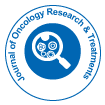Cancer Spending, Economic Burden and its Effect on the Household Welfare
Received Date: Aug 18, 2023 / Published Date: Jan 11, 2025
Abstract
Background: As the incidence of cancer rises, so does the prevalence of catastrophic medical expenses, which are increasingly considered to be one of the main causes of poverty.
Objective: The objective of this study is to analyse studies of Catastrophic Healthcare Expenditure (CHE) in cancer patients, assess their experience with catastrophic health expenditure, and identify factors associated with the incidence. The review compiled the various aspects of the economic impact of cancer on Indian society from the available and accessible literature.
Method: To conduct a thorough search of the literature; Google Scholar and PubMed were employed. The desk review was conducted using key phrases such as economic burden, cost, spending and cancer, cancer in the Northeast, CHE in cancer, and India cancer, cancer in Northeast India. Cancer burden and financing for recent studies were chosen. Several open access journals available were fully reviewed and their findings are noted.
Results: Long term cancer treatments involve a variety of medicines and expensive testing these are the main contributors to high cancer care expenses. According to the report the proportion of cancer patients who sought treatment outside NER is reported is seen to be more for Sikkim (95.3%) and Nagaland (58.1%). Due to the geographic dispersion of cancer treatment centres, patients are compelled to pay for travel and housing in order to obtain care at specialist oncology facilities, raising the cost of these charges. The high disease burden and rising cost of cancer treatment place a financial strain on both households and the individuals. Additionally, there is no prepayment or risk-pooling mechanisms in place, so this expense carries a high financial burden.
Keywords: Prevalence; Cancer spending; Economic burden; Household welfare; Cancer
Citation: Thomas TK, Chettri R, Kumar ChS, Nath A, Basnet N, et al. (2025) Cancer Spending, Economic Burden and its Effect on the Household Welfare. J Oncol Res Treat 10:307.
Copyright: © 2025 Chettri, et al. This is an open-access article distributed under the terms of the Creative Commons Attribution License, which permits unrestricted use, distribution and reproduction in any medium, provided the original author and source are credited.
Select your language of interest to view the total content in your interested language
Share This Article
Open Access Journals
Article Usage
- Total views: 1122
- [From(publication date): 0-0 - Dec 09, 2025]
- Breakdown by view type
- HTML page views: 986
- PDF downloads: 136
